SEPTEMBER 2014
The Big 5-0:
John Jay College Marks Milestone Anniversary

The timeline in the Haaren Hall lobby that showcases milestones in John Jay’s 50-year history is part of the College’s yearlong anniversary celebration.
To paraphrase George Orwell, every academic year at John Jay is special, but some years are more special than others.
The 2014-2015 school year will be a singular milestone in the life of the College, as the community celebrates the 50th Anniversary of John Jay’s founding. The celebration will kick off formally on September 17 with a Convocation featuring U.S. Supreme Court Justice Sonia Sotomayor, and will continue almost without let-up through the 2015 Commencement ceremonies next May.
“Over five decades ago, a small and dedicated group of academic visionaries came together to develop a plan for a new college representing a new idea. . . that a liberal arts education, with a focus on issues of justice, will advance our democracy’s pursuit of the common good,” President Jeremy Travis observed in an August 19 e-mail to the college community. “That vision has come true. John Jay College is a unique and powerful educational institution that has made a difference in our world. This year we honor those who had this vision, those who saved the College when it was almost closed, and those who built the remarkable institution that we love.”
The September 17 Convocation for new students will include remarks by Justice Sotomayor, a Bronx native who is the first Latina on the Supreme Court. The event will take place during the Community Hour, and the Justice is also planning to meet with select groups of students before and after the Convocation.
A planning group, chaired by interim Dean of Undergraduate Studies Allison Pease put together a suite of events and other offerings to mark the milestone anniversary. One of the more whimsical was the arrival on August 19 of the newest and smallest member of the John Jay community — Li’l Jay, a six-inch bobblehead representation of the College’s namesake. Hundreds of Li’l Jays will be distributed on campus, and members of the community are invited to take pictures of the statuette in various settings and post the images on social media.
On December 8, a life-size statue of John Jay will be unveiled in the Kroll Atrium. Produced by StudioEIS, one of the nation’s foremost designers of historical statuary, the bronze icon will take its place during a special ceremony that will be followed by the screening of a new film commemorating 50 years of the College.
Throughout the year, members of the college community and campus visitors will be able to view an engaging timeline of the history of John Jay that will remain on display in the Haaren Hall Lobby. The timeline, “A History of Educating for Justice,” will include a complementary digital exhibition.
Other commemorations planned for the 50th Anniversary include a “Future of Justice” expression contest; art installations; an “Acts of Justice” community service initiative; special alumni events, including a weekend-long Alumni Reunion in April 2015; and in May, the College’s 50th Commencement ceremony.
A full roster of events can be found on a special website created for the anniversary, at http://johnjay.jjay.cuny.edu/jjc50/.
Rolling Out the Welcome Mat
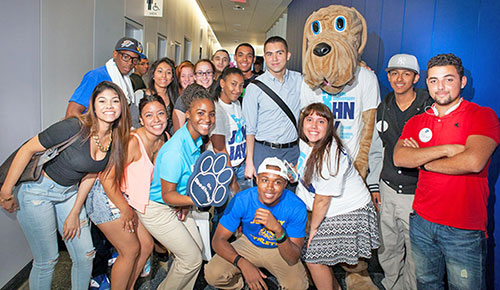
During a “paws” in orientation, new John Jay students get a first-class welcome from current students, Peer Ambassadors and the John Jay Bloodhound.
Click here, to view photos of the Orientation
Wave after wave of the newest members of the John Jay College community got their formal introduction to the College in three days of orientation sessions beginning on August 19, with President Jeremy Travis welcoming the new students by saying, “We feel really privileged that you’re here, and hope you’re excited to be here.”
The entering class of fall 2014 includes more than 2,800 freshman and transfer students, who were welcomed on August 19-21, and several hundred new graduate students, whose orientation took place on August 26.
For the new undergraduates, orientation included campus tours, a luncheon and club fair, a comprehensive campus-services expo in the main gym, and a formal welcome session in the Gerald W. Lynch Theater. “We are committed to your success,” said Travis, who underscored the importance of mentoring for new students, encouraging them to find and connect with one or more faculty mentors “who are doing work that engages and excites you.”
“It’s not enough to go to class and get all A’s,” added Dean of Students Kenneth Holmes, who introduced himself as the students’ “chief advocate” on campus. “You have to be engaged. “Get to know faculty members, get to know support services, learn about campus life and John Jay history.”
The College’s history was emphasized by the commemorative t-shirts sported by Holmes, Travis and the entering students, which were emblazoned with the logo designed for John Jay’s 50th anniversary, which is being celebrated this academic year. (See related story.)
A survey of attendees showed an overwhelmingly positive response to the events and activities that the Office of Student Transition Programs put together for orientation. Ninety-one percent of survey respondents agreed or strongly agreed that attending orientation made them feel a part of the John Jay community. A nearly unanimous 99 percent of respondents agreed or strongly agreed that attending orientation reinforced their decision to attend John Jay.
Free, and Nationwide: First MOOC Ready for Its 9/30 Debut
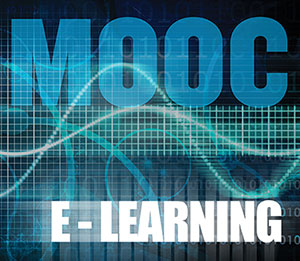 John Jay’s first-ever Massive Open Online Course, or MOOC, will begin on September 30, with registration now underway for the free eight-week course on the Literature and Law of American Slavery.
John Jay’s first-ever Massive Open Online Course, or MOOC, will begin on September 30, with registration now underway for the free eight-week course on the Literature and Law of American Slavery.
This unusual and in-depth look at one of the seminal periods of American history will paint a rich, multifaceted picture of the era, examining how American life today is still haunted and shaped by slavery. The course will be taught by Distinguished Professor of English John Matteson, who won the 2008 Pulitzer Prize for Biography for his book Eden’s Outcasts: The Story of Louisa May Alcott and Her Father.
Matteson noted that he designed the MOOC as an immersive experience. “We are still processing the effects of the slaveholding era today,” he said. “While most of us acknowledge and understand our history, we don’t think about, or examine, how the debate over slavery changed American law and influenced literature. With this MOOC, we’re taking American slavery out of the typical textbook context to explore not just how the people who lived through it were impacted, but how it still impacts us today.”
The MOOC will address many atypical issues about American slavery, including: the legal principles behind slavery, and the arguments for and against its legality; the response to slavery of leading American writers of the period; the perspective of the slaves themselves; the impact of the Civil War on writers who lived through it and saw it firsthand; and why slavery, which was abolished in the United States in the 1860s, still matters to us today.
Students can expect to spend up to five hours per week in the course, which will include video lectures, readings and discussions.
“We’re very proud to be able to offer the public a free course of this caliber,” said Feng Wang, director of John Jay Online. “Even a decade ago, this would not have been possible. Thanks to today’s technology, anyone with an Internet connection, no matter where they live or what their educational level is, can participate in a rich academic experience with classmates from around the world, taught by one of the brightest thinkers of our time.”
To learn more and register for this free course, please visit www.johnjayonline.com/slavery.
What the NRC’s Watershed Incarceration Report Means for New York State
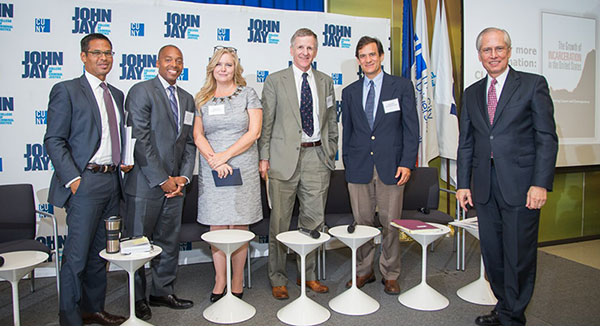
Members of the NRC Report Committee: L-R: Nicholas Turner, Khalil Gibran Mohammad, Heather Ann Thompson, Lawrence Mead, Josiah Rich and President Jeremy Travis (Chair)
An A-list gathering of scholars, elected officials, criminal justice leaders and others led a thought-provoking discussion on September 4 on the implications for New York State of the April 2014 National Research Council report “The Growth of Incarceration in the United States: Exploring Causes and Consequences.”
The report was produced by the NRC’s Committee on Law and Justice, chaired by John Jay President Jeremy Travis. To open the daylong conference, Travis presented a summary of the report’s findings, which stemmed from the conclusion that the costs of the current rate of incarceration in the U.S. far outweigh the benefits.
“The United States has gone past the point where the number of people in prison can be justified by any potential social benefits,” said Travis. “A criminal justice system that makes less use of incarceration can better achieve its aims than a harsher, more punitive system. There are common-sense, practical steps we can take to move in this direction.”
Sharply increased rates of incarceration in the United States since 1972 are the result of policy changes, not increased crime rates, Travis pointed out. Furthermore, while the impact of increased incarceration on crime reduction has been small, the social and economic consequences have been far-reaching.
The U.S. prison and jail population of 2.2 million adults is the largest in the world, the report found, and is marked by sharp racial and socioeconomic disparities. “It’s clear that incarceration is now a facet of the complex combination of negative conditions that characterize high-poverty communities in U.S. cities,” said the committee’s vice chair, sociology Professor Bruce Western of Harvard University. “Prisons are part of a poverty trap, with many paths leading in, but few leading out.”
With Nicholas Turner, executive director of the Vera Institute of Justice, serving as panel moderator, members of the NRC committee offered reactions and comments on the report findings, before fielding questions from the audience.
As the conference turned its attention to the NRC report’s implications for New York State, the discussion was spearheaded by a panel that included leaders of the New York State Assembly and Senate; members of the New York State Permanent Commission on Sentencing, including the commission’s co-chair, Manhattan District Attorney Cyrus R. Vance Jr.; and Rossana Rosado, Distinguished Lecturer at John Jay and chair of the New York State Council on Community Re-Entry and Reintegration.
“The answer to every felony conviction is not necessarily more jail,” said Vance, adding that New York State has experienced a drop in its overall prison population since its peak in 1998. “The goal for all of us,” he told the audience, “should be reducing the state prison population without sacrificing public safety.
The NRC report, Vance said, offers a reminder that sound criminal justice policy is “not about being tough on crime, but smart.”
Click here to read the full NRC report.
Three Students Win Coveted Gilman Scholarships
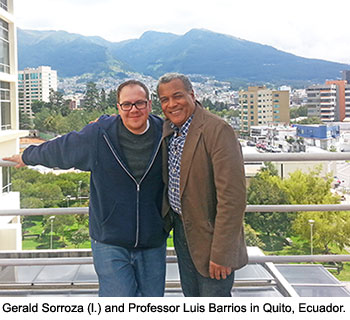 Three John Jay students enjoyed singular study-abroad experiences this summer, after having won highly competitive Benjamin A. Gilman International Scholarship awards to fund their travels.
Three John Jay students enjoyed singular study-abroad experiences this summer, after having won highly competitive Benjamin A. Gilman International Scholarship awards to fund their travels.
Gerald Sorroza and Janiri Carrasco used their State Department-funded awards to travel to Ecuador for the course “Critical Studies of the Andean Community,” taught by Professor Luis Barrios of the Department of Latin American and Latina/o Studies. The third award winner, Paola Rivera, spent part of her summer in Morocco for a course sponsored by the nonprofit organization AMIDEAST (America-Mideast Educational and Training Services Inc.).
John Jay had more 2014 Gilman Scholars than all but two other City University campuses, noted Maureen Brady Coyle, Director of the Office of International Studies and Programs. “The Gilman Scholarships are nationally competitive,” said Coyle. “And they’re looking for students who otherwise won’t have the opportunity to go.”
Candidates for the awards must be matriculated students who are Pell Grant recipients. Students must commit to a minimum 28-day study-abroad program, with an emphasis on non-traditional sites. “No Western Europe, no Australia,” said Coyle.
Coyle and Michael Scaduto, Coordinator of the Scholarship Office, certify applicants for Gilman scholarships. “We hold weekly workshops on study-abroad scholarship opportunities, especially Gilman, and we help students with the actual study abroad program,” Coyle said, adding that, increasingly students are turning to the Writing Center for help with their personal statements on scholarship applications.
Anderson Rosa of the International Studies and Programs office was credited with encouraging Sorroza to apply for the Gilman award. “He was very helpful, big time,” said Sorroza, who works in the John Jay mailroom and has been a part-time student majoring in Public Administration since 2006.
Both Sorroza and Carrasco also received John Jay study-abroad scholarships in addition to the Gilman awards.
Sorroza was not unfamiliar with Ecuador, since both his parents hail from the South American country, and he has visited there a number of times. Yet he was quick to point out, “While I’ve been there before, I saw Ecuador in a different light this time. I’m seeing more places than I had as a tourist.”
As important, the course’s subject matter, taught through classroom presentations as well as field trips, was something of a revelation. “Part of the class was to show how the society discriminates within itself,” Sorroza said. “I never paid attention to it in that way before. It was kind of eye-opening.”
For more information about the Benjamin A. Gilman International Scholarship program, contact the Office of International Studies and Programs at 212.484.1390. E-mail arosa@jjay.cuny.edu.
Project Eyes a Brighter Future for Minority & Female Science Students
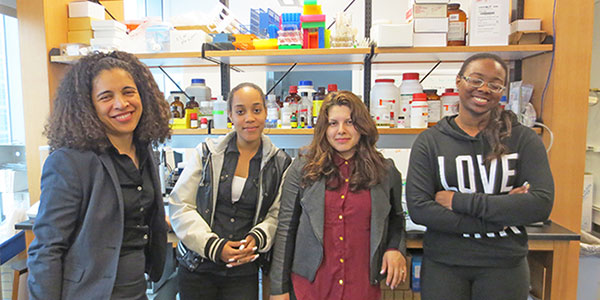
(L.-R.) Professor Lissette Delgado-Cruzata and her students Imani Hargett, Samantha Gonzalez and Brandy Aboua.
Aided by a grant from the CUNY Diversity Fund, Assistant Professor Lissette Delgado-Cruzata has created a program aimed at supporting female and minority science students, and increasing their chances for success in graduate school and research careers.
The Minority Initiative for Female Science Students (MIXXS2) was developed by Delgado-Cruzata, a member of the Department of Sciences, as a result of her own experiences and observations of the science field. In graduate school, she noticed there were few female or minority professors and students. When she came to John Jay and saw its large minority student body, she felt there “had to be a way to do something, so students go to graduate school and believe they can do research.
“This initiative is a platform for students to come together, where freshman can talk to seniors and graduates,” said Delgado-Cruzata. “We are approaching these issues in scientific ways so we can really tell what they need and give the right support. The hope is to foster relationships, networking, and support systems.”
Professor Anthony Carpi, the Associate Provost for Advancement of Research, noted: “Understanding the barriers that underrepresented students face in science is an important area of study, and this project nicely complements other efforts we have on campus to support success in the sciences.”
The funding has allowed Delgado-Cruzata to hire college assistants and administer a survey to gauge the needs of students and their perceptions of barriers to educational and professional success. The next phase will include administering the survey to the 300 minority female students in forensic sciences, conduct statistical analysis of that data, and submit it to a scientific journal for publication.
Three students, Brandy Aboua, Samantha Gonzalez and Imani Hargett, have worked with Delgado-Cruzata to organize the initiative’s activities, including creating a list of organizations that offer research and scholarship opportunities to minority women.
“This initiative is important because it provides a place where minority women can receive inspiration, encouragement and empowerment,” said Hargett. “It helps to dispel the negative connotations that may come with studying science and helps to further incorporate an underrepresented group into the science community.”
Welcome to John Jay!
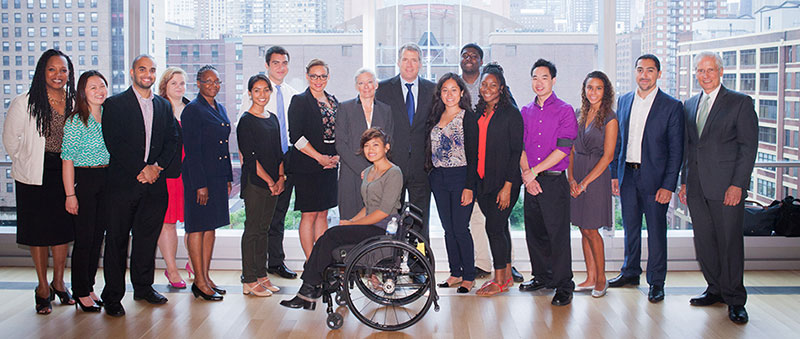
Just weeks into his tenure, City University Chancellor James B. Milliken (c.) paid a visit to John Jay on August 13, as part of a whirlwind tour of the University’s 24 units. In addition to seeing John Jay’s newly expanded campus and meeting with faculty members, the Chancellor, who was joined by his wife, Nana Smith, took time out for discussions and a photo op with students, Vice President for Student Affairs Lynette Cook-Francis (l.) and President Jeremy Travis (r.).
What is Li’l Jay up to?

Help celebrate John Jay’s 50th anniversary by taking pictures of and with Li’l Jay.
Every week a winner will be chosen whose picture of Li’l Jay will be featured on the College’s website.
Click here for details.
Faculty/Staff Notes
On Board
Rossana Rosado (Latin American and Latina/o Studies) has been named Distinguished Lecturer, beginning in September 2014. A trustee of the John Jay College Foundation and the former Publisher and CEO of El Diario/La Prensa, Rosado will teach a course on Latina/os in the United States.
Rama Sudhakar (Marketing and Development) is John Jay’s new Chief Communications Officer. She has previously held top marketing posts at Fairfield University and Trinity College, as well as at the Hartford Courant newspaper, all in Connecticut.
Kathryn Cousins (Marketing and Development) has been named Executive Director of Development. She recent worked as Director of Philanthropy at the University of Saskatchewan, and has also held key fundraising positions with the American Red Cross and Junior Achievement.
The Printed Page
Charles Strozier (History/Center on Terrorism) co-authored the article “How to Honor the Dead We Cannot Name: The problems with the Sept. 11 memorial museum,” that was published on Slate.com. Click here to read the article, which was co-written with Scott Gabriel Knowles of Drexel University.
Candace McCoy (Doctoral Program in Criminal Justice) had her op-ed “Prosecuting Officer Wilson Won't Bring Justice to Ferguson,” published in The Daily Beast on August 23. McCoy wrote, “political mobilization and hardheaded negotiation over future directions, whether collaborative or not, is the conversation that must begin in Ferguson.” Click here to read the article.
John DeCarlo (Law, Police Science and Criminal Justice Administration) interviewed for the article “Why Some Police Departments Still Do Bad Things” published in the First Person section of the Washington Post. Commenting on the need for better police training, DeCarlo said “There’s no cogent connection between the research that’s being done and the people on the ground.” Click here to read the article.
Maria Haberfeld (Law, Police Science and Criminal Justice Administration)wrote an op-ed “Why Did Ferguson Police Need Six Bullet?” for the CNN.com Opinion section. In the piece, Haberfeld calls for a national standard in training police on the use of deadly force that goes beyond the correct handling of weapons and is developed by “experts in the field of police studies, sociology, psychology and physiology.” Click here to read the article.
Delores Jones-Brown (Law, Police Science and Criminal Justice Administration) was interviewed on KCRW Los Angeles radio program “To the Point” about recent police-involved violence involving minorities. Jones-Brown discussed the importance of collecting data of police interactions with civilians. Click here to read the article.
Gloria Browne-Marshall (Law, Police Science and Criminal Justice Administration) was quoted in the article “Cop Killings Erased From History: A Tale of Federal Negligence” published in Salon.com. Browne-Marshall said, “If the Bureau of Justice Statistics maintained data on police use of deadly force then it would, in turn, be available to researchers, journalists and concerned communities.” Click here to read the article.
Peter Moskos (Law, Police Science and Criminal Justice Administration) wrote the op-ed article “When Should Cops Use Force?” that appeared in the New York Daily News on August 5. Moskos, a former Baltimore police officer, says “many police would do well to remember that effective compliance is as much earned as ordered.” Click here to read the article.
Eugene O’Donnell (Law, Police Science and Criminal Justice Administration) had his commentary “Death of Eric Garner shows how things can go wrong with a routine NYPD call, especially when force is used” published in the New York Daily News on July 22. O’Donnell is a former police officer and prosecutor. Click here to read the article.
Erin Thompson (Art & Music) authored an op-ed, “Egypt’s Looted Antiquities,” that was published in The New York Times on May 30, in which she called for greater attention to be paid to the increased international traffic in antiquities. Click here to read the entire commentary.
Evan Mandery (Criminal Justice) wrote the commentary “Why I’m Skipping My Harvard Reunion (A Call to Action)” that appeared in the online Huffington Post. In it, Mandery asserts that the American education system is not living up to the democratic grandeur of its nascent vision. Click here to read the commentary.
Recognition
Janice Johnson Dias (Sociology) was recently named one of three co-chairs of Newark, NJ, Mayor Ras Baraka’s public health transition team committee. Baraka was sworn in as the city’s 40th Mayor on July 1.
Belinda Rincón (Latin American and Latina/o Studies) has been awarded a $40,000 Ford Foundation Postdoctoral Fellowship that will allow her to complete a manuscript on Chicana literary and activist responses to war and militarism.
Jeremy Travis (President) received the 2014 Distinguished Achievement Award from the Center for Evidence-Based Crime Policy on June 24. The award cited Travis’s career-long dedication to connecting criminological research with criminal justice institutions and practices.
Rossana Rosado (John Jay College Foundation) and Ann Jacobs (Prisoner Reentry Institute) have been appointed by Gov. Andrew Cuomo to the newly formed New York State Council on Community Re-Entry and Reintegration. The council will offer recommendations to address obstacles facing formerly incarcerated people upon re-entering society.
Randall LaSalle (Economics) was named Educator of the Year by the Association of Certified Fraud Examiners. The award is presented to an ACFE member who has made an exceptional contribution in anti-fraud education. LaSalle is coordinator of the Economics major’s specialization in forensic financial analysis.
Veronica Michel (Political Science) received the 2014 Best Journal Article Award from the Law and Courts section of the American Political Science Association for her article “Human Rights Prosecutions and the Participation Rights of Victims in Latin America.” Co-authored with Kathryn Sikkink of the University of Minnesota, the article was published in the Law and Society Review.
Chongmin Na (Criminal Justice) is the recipient of 2014 Outstanding Article Award for Research in Criminology from the America Society of Criminology. The title of his article, co-authored by Ray Paternoster of the University of Maryland, is “Can Self-Control Change Substantially Over Time? Rethinking the Relationship between Self and Social Control.” In it, they test the long-term stability thesis of Gottfredson and Hirschi’s 1990 general theory of crime.
